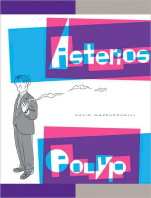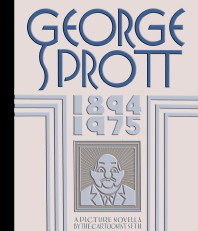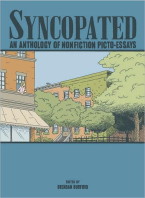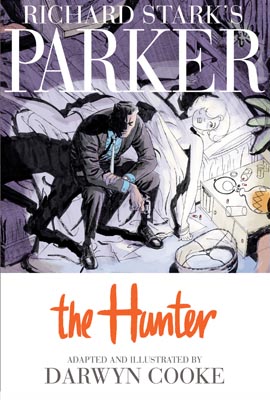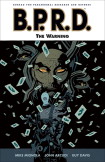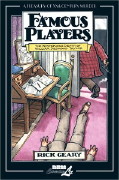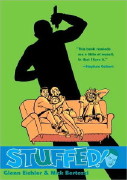Fathers and Sons: reviews of Danica Novgorodoff’s ‘Refresh, Refresh’ and ‘The Big Kahn’ by Neil Kleid and Nicolas Cinquegrani

I should start by quoting something weighty – the most
obvious would be that old Tolstoy saw about happy and unhappy families – but
let’s take that as written, shall we? Comics have given short shrift to
families for the past seventy years – at least, the American comic-book
industry has, though strip comics grew fat and bloated on the hijinks of
aggressively “relatable” families for that long and longer.
Even the undergrounds – typically about countercultural
types, who occasionally complain about their parents but try to avoid them as
much as possible – and the modern alt-comics movement (Alienated Loners R us!)
avoided family dynamics. Sure, there are exceptions, from Will Eisner to art
spiegelman, but the average American comics protagonist is an orphan – or wishes
he was.
Maybe that’s starting to change, or maybe I just have a couple
of anomalies on my hand. Either way, today, I have two books where that isn’t the case – not to say that these dads might not be
dead, absent, or problematic, but they’re definitely part of the story. And
their sons care who, and what – and where – their fathers are.
Refresh, Refresh
A graphic novel by Danica
Novgorodoff, adapted from a screenplay by James Ponsoldt based on the story by
Benjamin Percy
First Second, October 2009,
$17.99
What do men do? For many in the comics reviewing world,
that’s an easy question: men punch each other in the face. But they don’t have Refresh,
Refresh in mind when they say that. This graphic
novel is set in a small Oregon town, just a couple of years ago, where most of
the adult men are off fighting with the Marines in Iraq. And their sons –
mostly Cody and Josh and Gordon, three highschool-aged boys who are at the core
of this particular story – talk about joining up when they’re old enough, or
working in the local factory, or maybe even getting out.
But Refresh, Refresh
is based on a literary short story, and if there’s one thing we all know, it’s
that there’s no getting out of a story like that – it’s all doom and gloom
until the moment-of-clarity ending. So this town is stifling and without any
options, the boys drifting – from backyard boxing to underage drinking in bars
to racing around on motorbikes and sleds – as they rebel without any fathers to
drag them into line. (The narration – presumably taken from the original Percy
story; I don’t want to blame Novgorodoff for any of it – is particularly
heavy-handed in that area, such as this sequence from p.83: “We didn’t fully
understand the reason our fathers were fighting. We only understood that they
had to fight. ‘It’s all part of the game,’ my grandfather said. ‘It’s just the
way it is.’ We could only cross our fingers and wish on stars and hit refresh,
refresh, hoping they would return to us.”)
What they hit “refresh, refresh” on is their e-mail
in-boxes; that scene recurs several times in the story. Oddly, though, it’s the
only incursion of modern technology into a story that could otherwise be
Vietnam-era. They don’t follow their fathers’ platoon on CNN.com or an Armed
Forces website; don’t call each other on cellphones; don’t think about or track
or seem to notice the war on TV or the Internet; even their laptops seem to be
screwed down to tables, for all the moving they do.
Refresh, Refresh is a very traditional story about young men in
small towns; I could probably quote half-a-dozen Bruce Springsteen songs on
roughly the same topic, and with pretty much the same moral and tone. (And that’s
without diving into the world of the realist short story, where kitchen-sink
dramas almost require young men with promise to be squandered.) Novgorodoff
tells this version with a bit too much self-conscious artistry – too many deer
looking up at airplanes, too many of those explaining-the-theme narration boxes
– but she keeps the focus tight and specific, on these three boys and their
world, their choices and possibilities. A story like this is nearly always
about badchoices, though, so it
would be best to come to Refresh, Refresh with a MFA-teacher’s fatalism, and not expect anything so comic-booky
as a happy ending for the boys who punch each other in the face.



